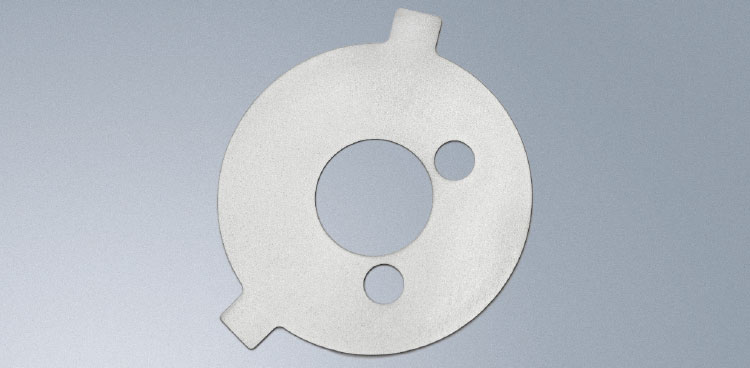Coatings to increase the coefficient of friction
More performance - less weight

Ceramic particles as “consolidator of components”
The smallest particles from technical ceramics or diamonds are particularly suitable for increasing the coefficient of friction and strengthening the connection between two parts. This is mainly due to their exceptional material hardness. The primary objective is to improve performance through enhanced power transmissions. But more secure connections between surfaces also means that designers can build components that are smaller or lighter without compromising their performance – or optimize the safety factors in their respective product environment. Furthermore, this makes it possible to use new materials for applications where the required torques can only be achieved at higher friction values. Last but not least, these and other modifications that make it possible to increase the coefficient of friction can help industrial users to make cost savings by offering them the combination of high power density and inexpensive construction.
Coatings that increase the coefficient of friction: performance-enhancing with a protective function
One way of using ceramic or diamond particles to achieve higher coefficients of friction are with coatings. These can be used in numerous forms in a variety of different industrial applications: common areas include vehicle construction (cars and bikes, as well as in ship and aircraft construction), the field of wind energy and mechanical engineering, e.g. for increasing the performance of component groups without changing the basic design. Specific examples of applications are central bolt connections on crankshafts and camshafts, flange joints with a high degree of vibration resistance and fatigue strength, and fastenings on housings.
In popular demand: electroless nickel dispersion coatings
Electroless nickel dispersion coatings are used frequently in industrial applications of coatings that increase the coefficient of friction. In addition to increasing the coefficient of friction, they come with the advantage of having a wear-resistant effect which protects the respective surfaces. Electroless nickel dispersion coatings should always be applied through verifiably certified processes (DIN ISO 9001, DIN EN ISO 14001, TS 16949).
Friction shims: impressively effective
For an effective increase in the coefficient of friction in frictional bolt or flange connections or interference fits, friction shims are also frequently used. The hard ceramic or diamond particles protruding from such shims press into the softer surface of the counterpart component during assembly. This creates micro-serration that has a coefficient of friction brought about by the specific materials of which the surfaces are made, their roughness and the surface pressure in the joint gap.
Just like all coatings that increase the coefficient of friction, the use of shims also opens up new opportunities for downsizing or lightweight construction applications by increasing the performance in power transmission. Here, too, the quality of the parts plays a role: when selecting friction shims, it’s important that corrosion resistance and a high degree of reproducibility can be guaranteed.
Enhanced driving with increased coefficient of frictions: applications in the automotive industry
The most renowned automotive groups in the world use coatings and shims containing ceramic or diamond particles to increase friction. Without having to change any components, they achieve transmissions with up to four times higher torques compared to conventional systems. The shims are primarily used in crankshaft connections, camshafts and balancer shaft modules, but are also increasingly being used in applications in the chassis, transmission and body.
Wind energy: more power for more energy
The demands in the construction of wind turbines have steadily increased in recent years. The objective is to improve the overall power density, while at the same time making savings in weight and the space required, combined with the lowest possible maintenance and a long service life. The use of shims and coatings to increase friction – such as for bolt or shaft-hub connections – allows exactly that, very high and reliable transmission of torques coupled with lightweight, compact constructions!

